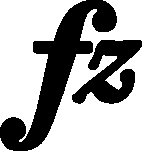



|
b. 236
|
composition: Op. 16, Rondo in E♭ major
..
GE has a category imprint: Differences between sources issues: GE revisions , fz – f |
||||||||||
|
b. 236
|
composition: Op. 16, Rondo in E♭ major
..
The mark placed in FE could be interpreted as a category imprint: Interpretations within context; Differences between sources issues: Long accents , EE revisions , Inaccuracies in GE |
||||||||||
|
b. 236
|
composition: Op. 22, Polonaise
..
We add a cautionary category imprint: Editorial revisions |
||||||||||
|
b. 236
|
composition: Op. 44, Polonaise in F♯ minor
..
In the main text we add a cautionary category imprint: Differences between sources; Editorial revisions issues: EE revisions |
||||||||||
|
b. 236-237
|
composition: Op. 49, Fantaisie in F minor
..
Out of the 27 half-bar accompaniment figures in three appearances of this theme (bars 68-72, 155-159 and 235-239), it is only in three of them that a change of the chord on which the figuration is based occurs in the middle of the figure, that is on the 4th quaver. The first time (bar 69) Chopin considered it in the pedal markings, whereas the next two times, right in the discussed bars, he did not. According to us, it is the composer's oversight, most probably resulting from haste in refining the manuscript (pedal markings were generally added to the finished text, in terms of rhythm and pitch, as one of the last elements of notation). Due to the above, in the main text we suggest a variant solution, with a possibility of releasing (changing) the pedal after the 1st triplet in each figure. category imprint: Editorial revisions issues: Inaccuracies in A |


 in
in 
 in
in 


 hairpin, as in
hairpin, as in  before b
before b 2 in the main text.
2 in the main text. before a1. In
before a1. In  and
and  1-e1 third.
1-e1 third.